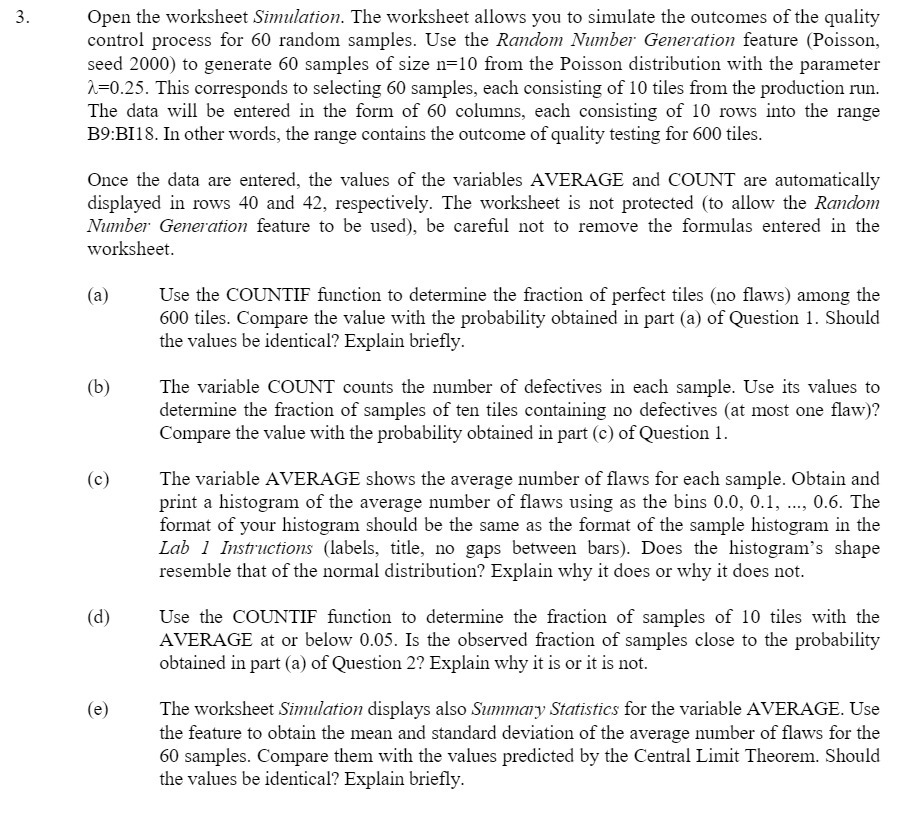Open the worksheet Simiiiatioa. The worksheet allows you to simulate the outcomes of the quality control process for 60 random samples. Use the Random Number Generation feature (Poisson, seed 2000) to generate 60 samples of size n=10 from the Poisson distribution with the parameter 1:025. This corresponds to selecting 60 samples, each consisting of 10 tiles from the production run. The data will be entered in the form of 60 columns, each consisting of 10 rows into the range B9:BI 1 8. In other words, the range contains the outcome of quality testing for 600 tiles. Once the data are entered, the values of The variables AVERAGE and COUNT are automatically displayed in rows 40 and 42, respectively. The worksheet is not protected (to allow the Random Mimber Generation feature to be used), be careful not to remove the formulas entered in the worksheet. (a) (b) (0} (d) (6) Use the COUNTIF function to determine the 'action of perfect tiles (no aws) among the 600 tiles. Compare the value with the probability obtained in part (a) of Question 1. Should the values be identical? Explain briey. The variable COUNT counts the number of defectives in each sample. Use its values to determine the fraction of samples of ten tiles containing no defectives (at most one aw)? Compare the value with the probability obtained in part (c) of Question 1. The variable AVERAGE shows the average number of aws for each sample. Obtain and print a histogram of the average number of aws using as the bins 0.0, 0.1, ..., 0.6. The format of your histogram should be the same as the format of the sample histogram in the Lab I Instructions (labels, title, no gaps between bars). Does the histogram's shape resemble that of the normal distribution? Explain why it does or why it does not. Use the COUNTIF inction to determine the fraction of samples of 10 tiles with the AVERAGE at or below 0.05. Is the observed 'action of samples close to the probability obtained in part (a) of Question 2? Explain why it is or it is not. The worksheet Simulation displays also Summary Statistics for the variable AVERAGE. Use the feature to obtain the mean and standard deviation of the average number of aws for the 60 samples. Compare them with the values predicted by the Central Limit Theorem. Should the values be identical? Explain briey







